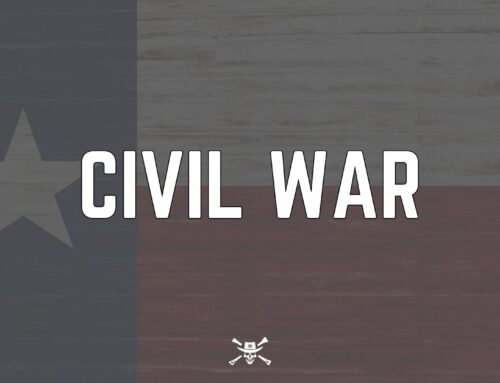The First Battle of Sabine Pass: A Significant Clash in the Civil War (September 24-25, 1862)
Introduction
The First Battle of Sabine Pass, fought on September 24-25, 1862, was a significant engagement in the American Civil War. This battle took place at Sabine Pass, Texas, where Union naval forces attempted to gain control of the strategic waterway guarded by Confederate defenders. The battle marked an important episode in the struggle for control over the Gulf Coast and showcased the determination of both sides in the conflict.
Background of the Battle
Strategic Importance of Sabine Pass
Sabine Pass, located on the border between Texas and Louisiana, was a crucial point of entry for the Confederacy. The pass allowed for the transport of goods and supplies to and from the Gulf of Mexico. Control of this waterway was vital for both the Union and the Confederacy, as it could significantly impact the supply lines and strategic positioning in the region.
Union Strategy and Objectives
In 1862, the Union sought to implement the Anaconda Plan, which aimed to blockade Southern ports and cut off supplies to the Confederate states. Sabine Pass was a key target in this strategy. Union forces planned to seize control of the pass, thereby gaining access to the interior of Texas and disrupting Confederate supply lines.
Preparations and Mobilization
Union Forces and Leadership
The Union forces involved in the First Battle of Sabine Pass were commanded by Lieutenant Frederick Crocker. The operation included four gunboats: the USS Clifton, the USS Westfield, the USS Harriet Lane, and the USS Owasco. These vessels were tasked with navigating the pass and engaging the Confederate defenses.
Confederate Forces and Strategy
The Confederate defenders at Sabine Pass were under the command of Lieutenant Richard W. Dowling. The Confederate force consisted of the Jefferson Davis Guards, a unit of about 40 men, equipped with six cannons. Their strategy was to fortify the pass and prevent Union ships from entering the waterway.
The Day of the Battle: September 24-25, 1862
Initial Naval Engagement
On September 24, 1862, the Union gunboats approached Sabine Pass with the intent to engage and neutralize the Confederate defenses. The Confederate forces, aware of the Union’s approach, prepared their artillery and awaited the attack. The Union ships began bombarding the Confederate positions, attempting to silence the defending cannons.
Confederate Resistance
Despite being heavily outnumbered and outgunned, the Confederate defenders put up a determined resistance. Lieutenant Dowling and his men utilized their knowledge of the terrain and their well-placed artillery to inflict significant damage on the Union gunboats. The narrow and shallow waters of the pass also hampered the Union’s maneuverability.
The Turning Point
On September 25, the battle intensified as Union forces attempted to push through the pass. The USS Clifton and the USS Westfield led the assault, coming under heavy fire from the Confederate artillery. The Clifton ran aground, becoming an easy target for Confederate gunners. The Westfield also faced heavy bombardment, forcing it to withdraw.
The Aftermath of the Battle
Union Casualties and Withdrawal
The Union forces, unable to break through the Confederate defenses and suffering from significant damage to their vessels, decided to withdraw. The Clifton, heavily damaged and grounded, was abandoned and later captured by Confederate forces. Union casualties included several sailors killed or wounded during the engagement.
Confederate Victory and Impact
The Confederate victory at Sabine Pass was a significant morale booster for the South. Despite being outnumbered and outgunned, the Confederate defenders successfully repelled the Union assault, maintaining control over the strategic waterway. The battle demonstrated the effectiveness of well-prepared defenses and the determination of the Confederate forces.
Strategic Impact
The Union’s failure to secure Sabine Pass meant that the Confederacy retained an important supply line and point of entry. The battle also delayed Union plans to advance into Texas, allowing the Confederacy more time to fortify and prepare for future engagements in the region.
Legacy and Commemoration
The First Battle of Sabine Pass is remembered as a testament to the resilience and determination of the Confederate defenders. The battle is commemorated through historical markers, reenactments, and educational programs, highlighting its significance in the broader context of the Civil War.
Legacy of the First Battle of Sabine Pass
Historical Significance
The First Battle of Sabine Pass holds a significant place in the history of the Civil War. It marked a key engagement in the Union’s efforts to blockade Southern ports and disrupt Confederate supply lines. The battle demonstrated the challenges faced by Union forces in navigating and controlling strategic waterways.
Cultural Impact
The legacy of the First Battle of Sabine Pass is deeply ingrained in Southern culture. The courage and determination of the Confederate defenders are celebrated in folklore, literature, and popular culture. The battle serves as a symbol of the South’s resistance and the strategic importance of coastal defenses.
Modern Reflections
Today, the First Battle of Sabine Pass is viewed with a sense of historical pride and reflection. It serves as a reminder of the challenges and sacrifices faced by both sides during the Civil War. The battle’s legacy is honored through education, preservation, and public commemoration.
Conclusion
The First Battle of Sabine Pass, fought on September 24-25, 1862, was a significant engagement in the American Civil War. Despite being outnumbered and outgunned, the Confederate defenders successfully repelled a Union naval assault, maintaining control over the strategic waterway. The battle demonstrated the effectiveness of well-prepared defenses and the determination of both sides in the conflict.
By exploring the history and impact of the First Battle of Sabine Pass, we gain a deeper appreciation for the courage and resilience of those who fought in the Civil War. The story of this battle underscores the importance of strategic planning, leadership, and the enduring spirit of determination that continues to define American history.





